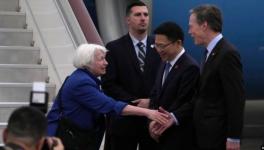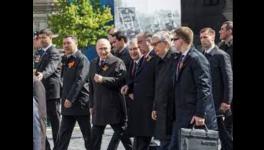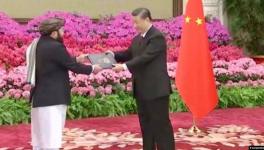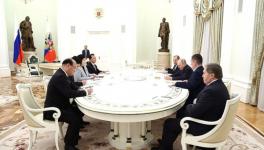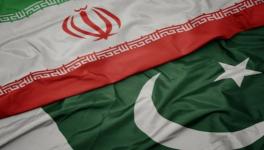Is Asia Possible?
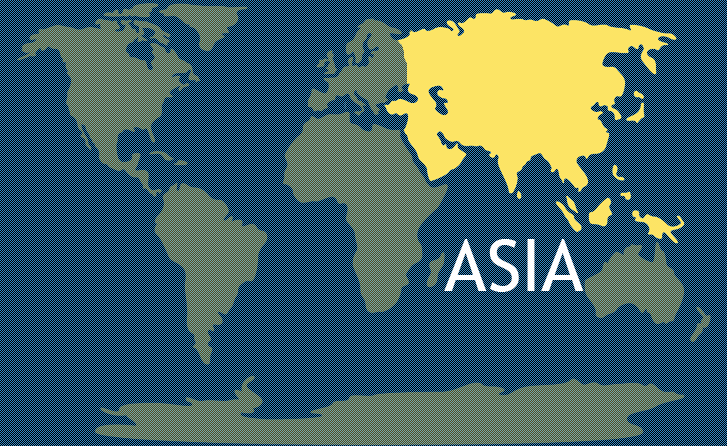
Image Courtesy: 7 Continents
Asia now refers merely to geography, to the vast terrain from one end of Japan to the other end of Lebanon that stretches across the globe, looking almost as if it will tear into bits from the tension.
Even the geography is unclear. Russia is the country with the largest landmass in Asia; it is almost twice the size of China. Yet, there is little consciousness of Russia as being part of Asia. It is typically seen as a European country or – at best – as a Eurasian state. Perhaps as Russia gets closer to China, it will turn its eyes from Berlin and Paris and look towards Beijing and Delhi with a little more clarity about its own future. Large parts of West Asia – from Palestine to the border of Afghanistan – are generally thought of as the Middle East and not as part of Asia (this applies to the Arabian Peninsula). The Himalayas rise like massive walls and have – over the centuries – blocked the easy traffic of ideas and customs between India and China. Buddhism had to travel through Afghanistan and then turn right to head into China and Japan. It could not easily cross the mountains.
Some countries – like India – are a continent themselves, hundreds of languages, thousands of cultural worlds. Other countries – like Indonesia – are broken up by hundreds of islands that are separated by over 5000 kilometres from one end to another. The highest point on the earth is in Asia (Mount Everest) and the lowest point on the earth is in Asia (the Dead Sea). The old Mongols would have ridden along the steppe for four thousand kilometres, going from the Uvs Nur basin to the Don River, passing all kinds of people, speaking all kinds of languages, growing all kinds of crops, nurturing all kinds of dreams of the afterlife and the purpose of life.
It is impossible to imagine ‘Asia’ as a simple word, a word that refers to something definitive. There are a hundred etymologies of the word ‘Asia’, most of them going to the ancient Greeks or even the Goths. None of these stories come from within the continent itself. There is an Assyrian wooden slab (a stele) which calls the western side of Assyria (Ereb) the ‘country of sunset’ and the eastern side of Assyria (Asu) the country of ‘sunrise’. This is a mere obvious fact for the Assyrian people, where the sun rises and sets, and not a real definition of the continent and its name.
Each of our continents in the Global South are devised in the majestic world of colonial science. They are not entities with a deep endogamous history.
Every place is a construct. No place is natural, even if it is island. If an island were a naturally bounded country, what to make of an archipelago (such as Indonesia with 17,504 islands) or what to make of an island divided into two countries (such as Hispaniola divided into the Dominican Republic and Haiti)? No boundary is natural, no nation is rooted in anything other than human history and human politics. That is a lesson being learned every time a new war breaks out, terrible wars in the Horn of Africa or in the steppe of Ukraine.
Which is why we seek the meaning of Asia not in ancient times, in a Greek word, but in its modern history, when it became clear that the people of this vast area were prepared to find political unity for a definitive use. When was this unity necessary? It was necessary as a means to confront imperialism, the extra-economic force used largely by the advanced industrial states of their age (Great Britain and the United States) to subordinate the land and the labour of the people who lived on this grand, vast landmass. It was in this struggle against imperialism that ‘India’ was born, that ‘China’ was born, that ‘Indonesia’ was born, that the ‘Philippines’ was born. Nationalist historians and politicians turn backwards, seeking to legitimise their national stories in the ancient world. But these are fabrications. They are necessary to make people feel like their patriotism and their nationalism is old, when in fact it is not so old, not so natural, not so rooted in antiquity and race. For the people inside this vast landmass, nations were born in struggle against an oppressor, against an invader. It was the invader who partly helped shape the conditions for the creation of the nation. The people themselves, in their anti-colonial struggles, reached backward to their history and their geography to design the actual shape of their nationalism – sometime a nationalism rooted in the patriotism of the poor, but often a nationalism soured by the ugliness of profit for the few.
And so too the idea of ‘Asia’ or – more properly – pan-Asia. This was the cognate of pan-Africanism and pan-Arabism, of Patria Grande in Latin America – ideas of political unity for a people who had been subjugated by imperialism. There was no pan-Africanism that predated the fight against colonialism, no Patria Grande without the anti-imperialist sensibility, no pan-Arabism without the deep humiliation of colonial domination. The desire for continental and global unity came from the deep longing to defeat imperialism. This is why people came from far and wide to Moscow to attend the meetings of the Communist International from 1919 – and especially from 1920 onwards as far as Asian delegates were concerned – and it is why so many Asian radicals and nationalists came to Brussels in 1927-28 for the League Against Imperialism meeting. It was clear that the Great War of 1914-1918 and the Revolution in the Tsarist Empire that produced the Union of Soviet Socialist Republics had dented the invincibility of the imperialists. It was equally clear that the tepid promises of independence made by the League of Nations would not be honoured and that matters had to be taken in hand.
That was the sensibility at the first Pan-African conference of 1919 held in Paris. It was the sensibility of Sharif Hussein, who took on the name King of the Arab Countries in 1916 and called for the freedom and unity of the Arab lands. It was this emotion that led Manuel Ugarte, an Argentinian, to write the 1922 book La Patria Grande, a call for the unification of the Spanish-speaking lands of the Americas against imperialism. It was this same spirit that animated China’s Sun Yat-Sen to call for ‘Greater Asianism’ in a famous speech from 1924. What was the reason for the call towards Greater Asianism or Pan-Asianism? ‘We advocate Pan-Asianism in order to restore the status of Asia’, said Sun Yat-Sen. It was precisely the motivations of all projects for unity in the colonised world, whether in Africa, Asia or Latin America. They wished to ‘restore the status’ of their fallen lands.
Every project of unity in the colonised world had a continuous history – pan-Africanism continues till this day, as does Patria Grande, as does pan-Arabism. The dents and scuffs of internal tensions prevent the realisation of any of these concepts, but the very ideas remain intact. Pan-Asianism is different. The idea burned to a crisp because of Japanese expansionism, with its Greater East Asia Co-Prosperity Sphere and its use of the concepts of Asian unity for its domination of large parts of Asia. In 1943, the Greater East Asia Conference in Tokyo brought together heads of states of various effectively colonies of Japan, where the Japanese Prime Minister Hideki Tojo praised the ‘spiritual essence’ of Asia. Tojo used the same kind of emotional and romantic language that had marked the world of people such as the Japanese art historian Kakuzo Okakura and the Indian poet Rabindranath Tagore. Okakura had lived in Tagore’s Calcutta house for almost a year in 1902. It was here that Okakura wrote The Awakening of Asia (1904) and it was here that he began The Ideals of the East (1903). ‘Asia is one’, begins The Ideals. All this was charming. But, then, in The Awakening of Japan (1904), Okakura supported his country’s annexation of Korea (Japan, he wrote, had no ambitions over Korea or Manchuria. ‘If China and Russia had respected the independence of Korea, no wars would have taken place’ – this is a fanciful interpretation). It is in this book that Okakura bemoans the reputation of Japan – ‘so eager to identify ourselves with European civilisation instead of Asiatic that our continental neighbours regard us as renegades – nay, even as an embodiment of the White Disaster itself’.
Tagore tired of the ‘White Disaster’, of imperialism disguised as something high-minded – the donation of Western Civilisation or Japanese Culture. When he visited Japan in 1916, Tagore gave a stinging rebuke to nationalism, which was really to the kind of expansionary behaviour of the Japanese empire. Accused of being soft, Tagore wrote a poem – The Song of the Defeated.
My master has bid me while I stand at the roadside
To sing the song of defeat
For that is the bride whom he woos in secret
She has put on the dark veil, hiding her face from the crowd
But the jewel glows on her breast in the dark.
Tagore gave the poem to a Korean student – Chin Hak-Mun – who was studying in Japan. Chin Hak-Mun, who would later become a well-known writer, visited Tagore at the Yokohama home of the art collector and banker Hara Tomitaro. Tagore’s gift suggested another kind of pan-Asianism, a unity of the defeated who hoped one day to overcome defeat not with empires of their own but with something more precious than that – solidarity amongst peoples for the mutual well-being of each and all. It is not defeat that is shameful, suggested Tagore, but subordination of others.
In 1917, Tagore published Nationalism, in which he wrote, ‘nationalism is a great menace’. What he meant was that the European form – rooted in the illusion of social cohesion and of industrial progress – would leave countries such as Japan and India struggling with the ‘borrowed weapons of civilisation’ and unwilling to harness their own inheritance. Political independence was necessary, settling accounts with the wretchedness of social hierarchy was necessary, but so too was a generous attitude to one’s own past and to what one might learn from one’s neighbours. India, Tagore suggested, needed to surmount the challenges of caste hierarchy (as the United States needed to deal with its ugly racism, he pointed out); but then India and other Asian countries should not turn inward, but need to learn from each other to advance the project of human development.
After World War II ended, the dream of pan-Asianism remained gently intact. The Asian Relations Conference of 1947 opened with India’s Nehru calling for a new project, something miles away from the Japanese empire. ‘We have no designs against anybody’, Nehru said, ‘Ours is the great design of promoting peace and progress all over the world’. Japanese delegates – eager for a fresh start – wanted to come to the Asian Relations Conference in 1947 but were prevented by the US Occupation authorities. There is a straight line that goes from the Asian Relations Conference to the Asian-African Conference of 1955 at Bandung and to the formation of the Non-Aligned Movement in Belgrade in 1961. Calls for an Asian Federation in 1947 were rebuffed by South-East Asians who had just come out of the terrible experience of Japanese expansionism, and they were set aside by the countries around Asia that had joined one or the other US military alliances (CENTO and SEATO). The vicious wars by the new imperialist powers against Korea and Vietnam, Malaya and Indonesia set the dial for Asian unity at zero. British concentration camps for the communist insurgents and US carpet bombing of the Korean north sent a strong message across Asia for the old notables and the new bourgeois nationalists to hide under the umbrella of Western power against their own people. Border conflicts between India and China and between Pakistan and India as well as across South-East Asia made dreams of unity appear distant.
In this context, to think of ‘Asia’ was an illusion. While Kwame Nkrumah championed pan-Africanism and Gamel Abdul Nasser pushed pan-Arabism, no political force in Asia could legitimately drive a pan-Asian agenda. There simply is no intellectual or political resource generated during the Cold War that developed a progressive pan-Asian platform.
The tentacles of US imperialism and the malignancies of the Cold War undermined any possibility of a renewed pan-Asianism. The hub and spokes system of US power encircled the USSR and China, reducing countries such as Japan and the Philippines, Pakistan and Iran into military bases, dependencies with their own flags, paranoid old notables carrying buckets for the White Disaster, as Okakura called it. What could have flourished after Bandung faltered, border wars and trade wars engulfed the energy for unity and progress. [pic 15] The clarity of Kwame Nkrumah did not make itself felt on the Asian continent – Nkrumah warning, five decades ago, ‘If we do not formulate plans for unity and take active steps to form political union, we will soon be fighting and warring among ourselves with the imperialists and colonialists standing behind the screen and pulling vicious wires to make us cut each other’s throats for the sake of their diabolical purposes in Africa’. There is no such ideological seam in Asia, no such political direction that puts at the forefront the importance of unity against division.
Nostalgic returns to Asian spiritualism, crafted by the Singaporean intellectual Kishore Mahbubhani and championed by Singapore’s Lee Kwan Yew and Malaysia’s Mahathir Mohamad in the 1990s, stressed Asian cultural superiority as a way to explain the rise of the Tigers. This was a facile theory, absent any real economic content, that sought an explanation for the global commodity chain in Asian values. The locus was East Asia, bewilderment being the sense in the literature about South, Central, West and North Asia. For in India half the population lives in poverty – over 700 million people. No cultural explanation is sufficient for its condition. This sentiment – Asian values – was merely a description of why the Tigers flourished not a hope for Asian unity. In fact, Asian unity was not on the cards at all.
Hard-nosed pragmatic policies have emerged to unite certain countries in Asia. The fragility of US hegemony after the illegal war on Iraq and the world financial crisis brought to the forefront the BRICS project, a platform to claim multipolarity as the unipolar system fell apart. But this BRICS dynamic now flounders as right-wing authoritarian and neo-fascist governments hold power in at least Brazil and India. The BRICS project was never continental or even regional. It was always a place for regional giants – South Africa for the Africa continent, Brazil for South America – to link up with each other, challenge the unipolar order and strengthen their own role in their neighbourhoods. The increased tensions around Ukraine have now revived the possibility of the BRICS playing some kind of role in the world.
Old Cold War fantasies of encaging China provide other platforms for unity – such as between India, Singapore and Japan (with India and Japan along with Australia and US as part of the Quad). But these are ugly platforms, alliances thrust upon states that are the hubs for a faltering US hegemony over Asia. Even relatively small-scale unities – the halting negotiations on the Korean peninsula – are forbidden to this kind of process. Japan and South Korea must remain client states of the West, aircraft carriers for its necessary encirclement of China’s return to the world stage. No ‘Asia’ is possible here, only poverty and war.
In 2018, the US government announced that its War on Terror was over and that it would focus attention against its two main adversaries, China and Russia, the ‘near peer’ contestants for power. That faltering US hegemony comes as China stretches out of its borders through a Belt and Road Initiative and a String of Pearls strategy. Even this is limited, with China – and perhaps Russia – moving a strategic and economic agenda out of a position of defensiveness. China’s development agenda had been yoked to the US economy, and now it seeks hastily to pivot away from consumers who are over-leveraged to new consumers in Central and West Asia, in South Asia and South America and across the African continent. There is no Asianism here, no progressive content beyond the importance of using social wealth to undermine starvation and deprivation.
There is a need to travel deep into our histories, to recover older dreams of Asia that spluttered into world history a hundred years ago. It would be useful to track the journey of Raja Mahendra Pratap Singh, the Marxist who went from Lenin’s study (1919) to the Pan-Asiatic League Conference in Nagasaki (1926). It would be useful to look at the journeys of Ho Chi Minh, MN Roy and Tan Malaka as well as Ayna Sultanova and Nadzhiya Hanum. It would be of interest to study the writings of Hotsumi Ozaki, who oscillated between communism and nationalism, and to study the writings of An Chung-gun, the Korean nationalist who assassinated Prince Ito Hirobumi and paid for it with his life. It is worthwhile to start again backwards with the socialist and anarchist Asiatic Humanitarian Brotherhood (1907) and the Ajia Gikai (Asian Congress), ‘an Oriental Association in Tokyo’, said a British intelligence report, ‘attended by Japanese, Filipinos, Siamese, Indians, Koreans and Chinese’ (1909).
It would be good to breathe in our limitations, the disavowal of the Rohingya, the lack of a new economic vision for the poor, the terrible violence in the Philippines, the rigidities across the Himalayas, the impossible tensions in the South-China Sea and in the Indian Ocean, the old toxic competitiveness that has leaked into our world without any answers to the fundamental problems of our times. It would be good for artists and intellectuals to open a serious conversation about a new progressive pan-Asianism, a continental vision of a new kind of socialist world that looks beyond greed and towards the wider palate of human experience and emotion. If there is to be an Asia and if there is to be solidarity, let these words have some meaning.
Faiz Ahmed Faiz, Urdu’s greatest poet, watched the defeat of the Palestinians in June 1967 and then wrote Atop the Sinai Valley (Sar-e Vaadi-e Seena),
Once more, lightening shimmers atop the Sinai valley.
O seeing eye
Ask the hearts to line up again
That between you and I, a new promise may descend
For now, the earth’s elite has decreed Tyranny to be normal
And the mufti has said oppression is worth obeying
To break this centuries-old cycle of acquiescence
A new proclamation must descend, the proclamation of dissent.
Get the latest reports & analysis with people's perspective on Protests, movements & deep analytical videos, discussions of the current affairs in your Telegram app. Subscribe to NewsClick's Telegram channel & get Real-Time updates on stories, as they get published on our website.









